
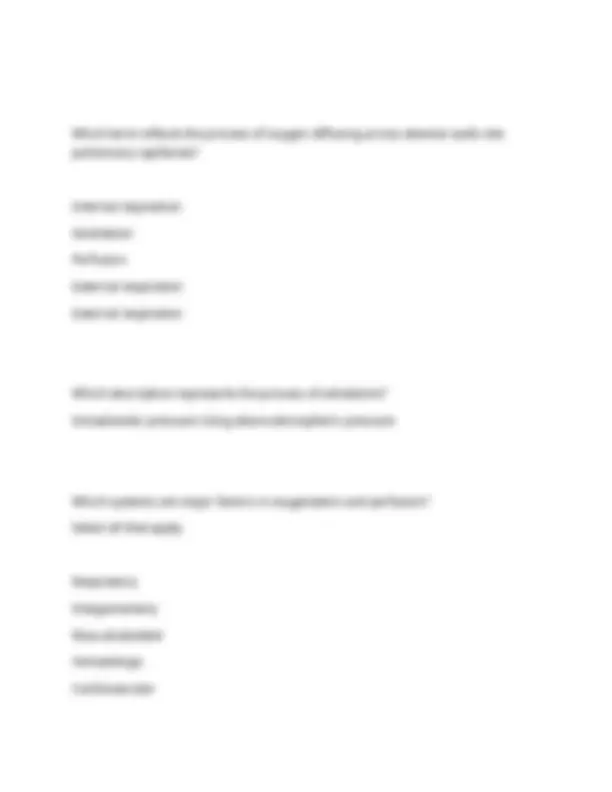
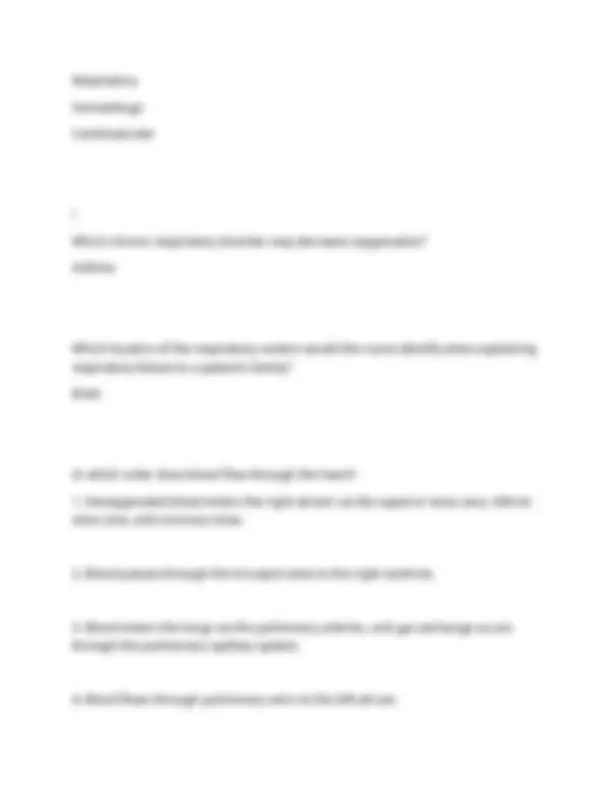
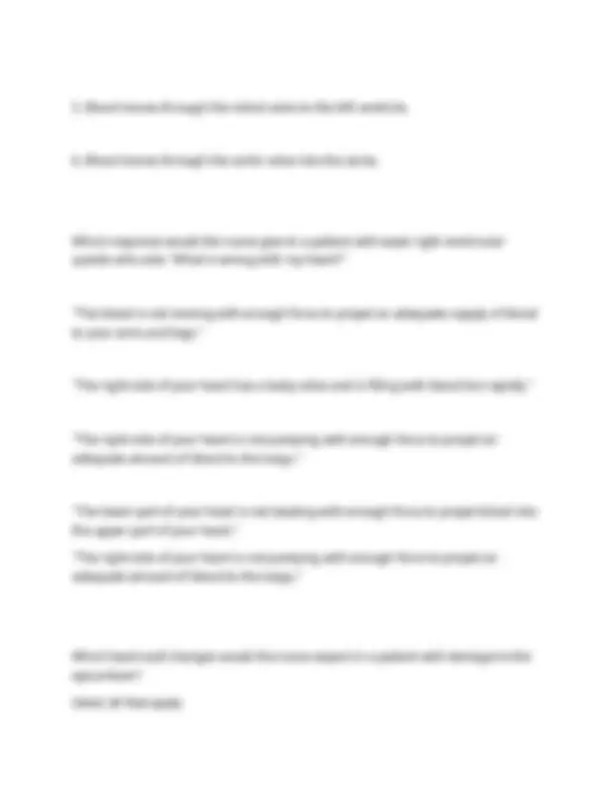
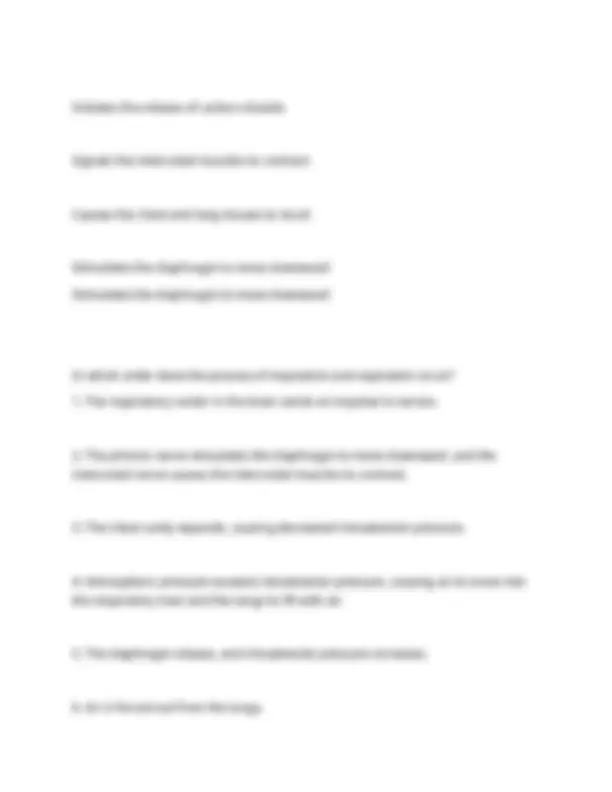
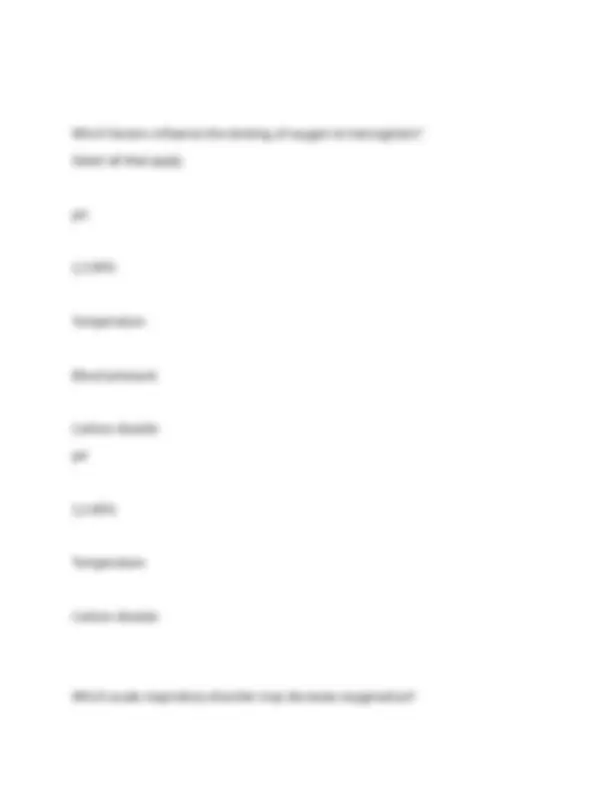
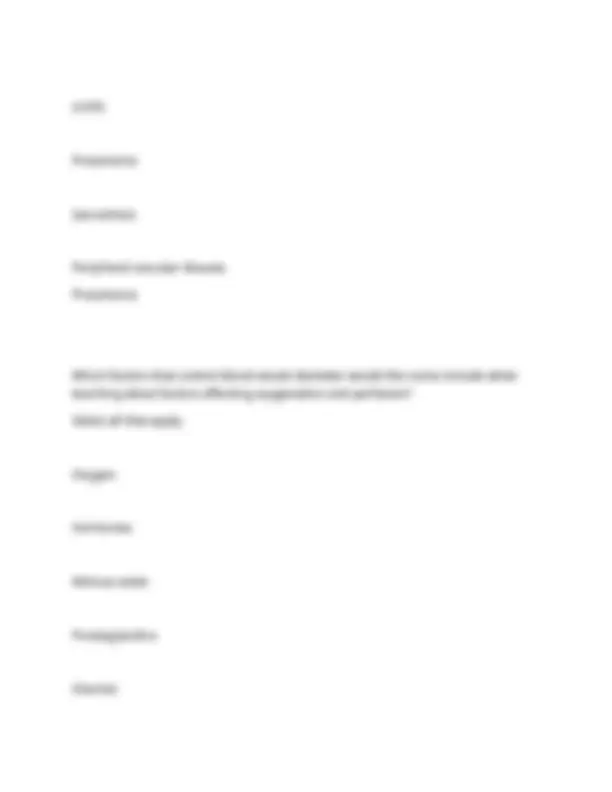


Study with the several resources on Docsity

Earn points by helping other students or get them with a premium plan


Prepare for your exams
Study with the several resources on Docsity

Earn points to download
Earn points by helping other students or get them with a premium plan
Community
Ask the community for help and clear up your study doubts
Discover the best universities in your country according to Docsity users
Free resources
Download our free guides on studying techniques, anxiety management strategies, and thesis advice from Docsity tutors
BSN 206 - Sherpath - Overview of Oxygenation and Perfusion
Typology: Exams
1 / 11

This page cannot be seen from the preview
Don't miss anything!







Which blood vessel returns oxygenated blood to the heart? Pulmonary vein Match the layers of heart with their positions. Middle layer of muscle tissue in the heart Myocardium Outermost layer of the heart Epicardium Innermost layer of the heart Endocardium Venous blood returning from the body enters which chamber of the heart first? Right atrium
Which structures reside within the lungs? Select all that apply. Segmental bronchi Trachea Carina Alveolar duct Larynx Segmental bronchi Alveolar duct Through which parts of the respiratory tract does air flow after moving through the trachea? Select all that apply. Larynx Sinuses Bronchioles Alveoli Vocal cords Bronchioles Alveoli
Respiratory Hematologic Cardiovascular ! Which chronic respiratory disorder may decrease oxygenation? Asthma Which location of the respiratory centers would the nurse identify when explaining respiratory failure to a patient's family? Brain In which order does blood flow through the heart?
The heart receives deoxygenated blood from the lungs. The heart plays a role in tissue oxygenation. The heart has two atrial chambers and two ventricular chambers. The heart pumps oxygenated blood to all parts of the body. The heart plays a role in tissue oxygenation. Which trigger of inspiration would the nurse include when teaching a patient with a chronic respiratory disease about the breathing process? Impulses in the respiratory center of the brain Phrenic nerve stimulation of the diaphragm Outward expansion of the intercostal muscles Metabolism of oxygen at the cellular level Impulses in the respiratory center of the brain Which statement describes the role of the phrenic nerve during the inspiratory phase of respiration?
Initiates the release of carbon dioxide Signals the intercostal muscles to contract Causes the chest and lung tissues to recoil Stimulates the diaphragm to move downward Stimulates the diaphragm to move downward In which order does the process of inspiration and expiration occur?
Pneumonia Sarcoidosis Peripheral vascular disease Pneumonia Which factors that control blood vessel diameter would the nurse include when teaching about factors affecting oxygenation and perfusion? Select all that apply. Oxygen Hormones Nitrous oxide Prostaglandins Glucose
Oxygen Hormones Nitrous oxide Prostaglandins